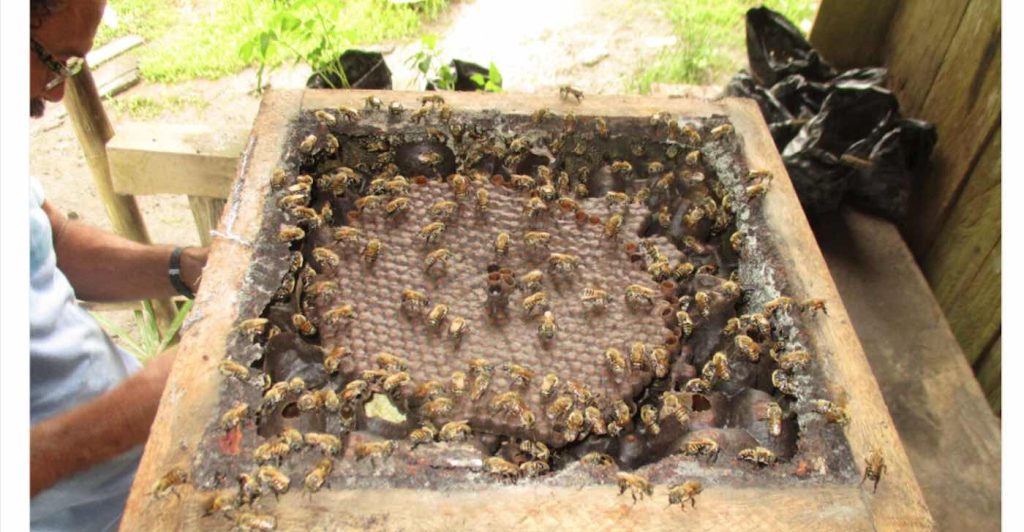
STINGLESS BEES BRING LIFE BACK TO THE AMAZON WITH MEDICINAL HONEY & NEW INCOME
BY: ANDY CORBLEYSITE: GOOD NEWS NETWORK
TRENDING
Activism
Belief
Big Pharma
Conspiracy
Cult
Culture
Economy
Education
Entertainment
Environment
Global
Government
Health
Hi Tech
Politics
Prophecy
Science
Social Climate
Universe
War
While the rest of modern civilization gets honey mostly from European honeybees, indigenous tribes in Peru’s slice of the Amazon get theirs from stingless bees, which seems way smarter.
But it’s more than just smart, it’s absolutely essential for people like the Kukama-Kukamiria, who now use it as food, a source of income, and medicine for everything from skin cuts to bronchitis.
Now, scientists working with these tribes are beginning to scratch the surface of the full extent the benefits this traditional bee husbandry, or ‘meliponiculture’ can have for people like the Kukama-Kukamiria, and the world at large.
Scientists such as Cesar Delgado Vasquez at the Institute for Investigations of the Peruvian Amazon, are working with indigenous groups as both teachers and learners; teaching them how to keep and raise stingless bees to produce their own honey without damaging wild nests, and learning about the immense value of this liquid medicine.
Delgado conducted a field study with three separate communities and four separate species of stingless bee to evaluate the physicochemical and microbiological characteristics of the honey they produced. They found that the humidity and sugar content didn’t change much between honeys, but the analysis of the high-quality chemical contents identified was able to lead to an increase in the unit price from $3.00 to $27.00.
LOOK : French Beekeeper Invents a Trap to Take on Asian Hornets Decimating Bee Populations in Europe
A spoonful of honey IS the medicine going down
With 600 species of stingless bees in the New World, the amount of possible data is immense. Each of these species have different relationships with hundreds of native plant species, and in the same way honey bought in a store from bees feeding on the pollen of oregano plants will taste different from honey made from clover plants, these pollinator-plant exchanges can change the medicinal and nutritional qualities of the honey produced.

Tribes use meliponine (stingless) bee honey to treat colds, cuts and abrasions, skin conditions, upper-respiratory tract infections, diabetes, gastrointestinal problems, pneumonia, burns, arthritis, and even cancer—and all these effects can be generated or amplified depending on the bees’ diet. For example, the honey from bees that feed on the pollen of the araza plant is being evaluated for anti-cancer properties.
Delgado has helped teach indigenous communities the most effective ways to husband meliponine bees. Using rectangular boxes with easy access to the honey, half of the states in the Peruvian Amazon now have communities keeping bees.
“For conservation, it is necessary to prevent people from cutting down the trees to obtain honey, as well as to increase production yields. It is also necessary to provide information on honey quality parameters and improve the incomes of small producers or family farming, making it a profitable activity,” Delgado wrote in his study .
Delgado was the chief author of another paper that found when indigenous communities practiced horticulture or agriculture—and kept bees next to their fields—providing they were cropping native species such as camu fruits, their yields would increase a whopping 44%.
RELATED : Company’s Innovative Smart Beehive Gets $80 Million in Funding to Save Bees From Any Hazard
Meliponiculture is already widely adopted in Brazil, and in making its way to Peru, it gives the forests, the bees, and the tribes a better chance for surviving through the decades.
Click 3 Dots Below to View Complete Sidebar


